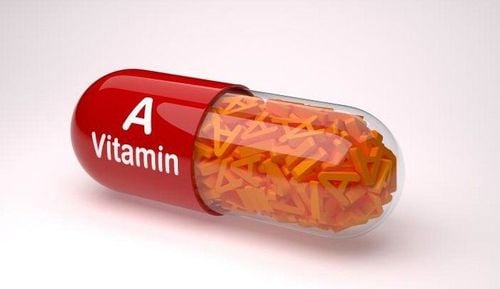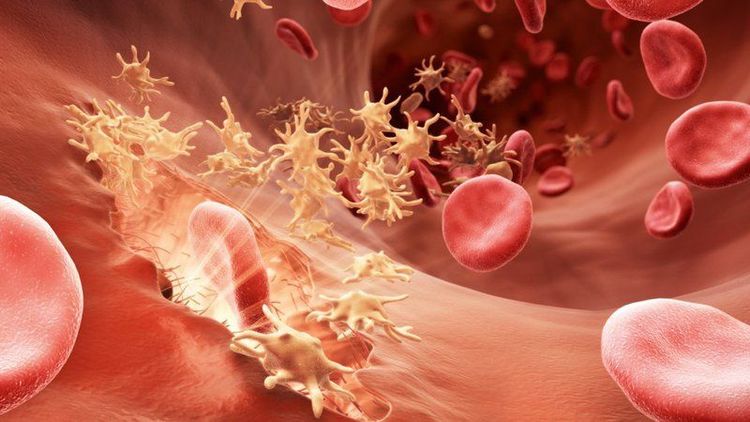This is an automatically translated article.
As an oral supplement, vitamin A is primarily beneficial for people with a poor diet or those with conditions that increase vitamin A requirements such as pancreatic, eye or measles disease. Interactions can occur if vitamin A is taken incorrectly.1. What is Vitamin A?
Vitamin A (retinol, isotretinoin) is an important nutrient for vision, growth, cell division, reproduction, and immunity. Vitamin A also has antioxidant properties.Vitamin A is found in many foods such as spinach, dairy products, liver, green leafy vegetables, carrots and cantaloupe....
As an oral supplement, vitamin A is mainly found in vitamin A. Beneficial for people with a poor diet or those with increased vitamin A requirements such as pancreatic disease , eye disease or measles . If you take vitamin A for its antioxidant properties, keep in mind that supplements may not provide the same benefits as antioxidants in nature.
The recommended daily amount of vitamin A is 900 micrograms (mcg) for adult men and 700 mcg for adult women.

Vitamin A (retinol, isotretinoin) là một chất dinh dưỡng quan trọng đối với thị lực, tăng trưởng, phân chia tế bào, sinh sản và miễn dịch
2. Possible interactions
2.1. Skin Disease Medicines (Retinoids) Interacts With Vitamin A Some skin medications work with vitamin A. Taking vitamin A pills and these medications for skin conditions can cause side effects and side effects. Side effects of too much vitamin A.2.2. Antibiotics (Tetracycline antibiotics) interacts with Vitamin A Vitamin A can interact with some antibiotics. Taking very large amounts of vitamin A along with certain antibiotics can increase your risk of a serious side effect called intracranial hypertension. But taking normal doses of vitamin A along with tetracycline doesn't seem to cause this problem.
2.3. Drugs that can harm the liver (Hepatotoxins) interacts with Vitamin A Taking large amounts of vitamin A can harm the liver. Taking large amounts of vitamin A along with medications that can also damage the liver may increase the risk of liver damage. Do not take large amounts of vitamin A if you are taking a medication that can damage the liver.
Some drugs that can harm the liver include acetaminophen (Tylenol and others), amiodarone (Cordarone), carbamazepine (Tegretol), isoniazid (INH), methotrexate (Rheumatrex), methyldopa (Aldomet), fluconazole (Diflucan), ), itraconazole (Sporanox), erythromycin (Erythrocin, Ilosone, others), phenytoin (Dilantin), lovastatin (Mevacor), pravastatin (Pravachol), simvastatin (Zocor), and many others.
2.4. Warfarin (Coumadin) interacts with Vitamin A Large amounts of Vitamin A can also slow blood clotting. Taking Vitamin A along with warfarin (Coumadin) might increase the chance of bruising and bleeding. Make sure to have regular blood tests.

Một lượng lớn Vitamin A cũng có thể làm chậm quá trình đông máu
3. Side effects of vitamin A pills
The effects of some medicines may change if you take other medicines or herbal products at the same time. These drug interactions can occur, but do not always occur. To help your doctor and pharmacist give you the best care, be sure to tell your doctor and pharmacist about all the products you use. While using this product stop or change the dosage of any other medicines you are taking without your doctor's consent.Some products that may interact with this vitamin include: Acitretin, alitretinoin, bexarotene, cholestyramine, isotretinoin, tretinoin, other products containing vitamin A (such as multivitamins), warfarin. Avoid taking vitamin A at the same time as neomycin, orlistat, and mineral oil.
4. Functions and Sources of Vitamin A
In the eye, retinal is combined with a protein called opsin to create rhodopsin, an essential light-absorbing molecule needed for color vision and vision in dim light.Another form of Vitamin A, retinoic acid, is a hormone-like growth factor important for epithelial cells and other cell types in the body.
Vitamin A is found in both plant and animal food sources. The form of vitamin A absorbed when consuming animal sources is retinyl palmitate, which is converted to an alcohol called retinol. Retinol acts as a storage form of vitamin A, which can be converted from retinal, the active aldehyde form of the molecule. One of the richest animal sources of Vitamin A is liver.

Một số loại thực phẩm giàu vitamin A
The recommended daily amount of vitamin A for adults is 0.7 mg for men and 0.6 mg for women. Any vitamin A that is not needed is immediately stored for future use for bodily functions.
Hope the above information has provided you with more options and answers to possible interactions when taking vitamin A. Wish you always have a scientific diet and improve your work productivity and improve your life.
Please dial HOTLINE for more information or register for an appointment HERE. Download MyVinmec app to make appointments faster and to manage your bookings easily.













